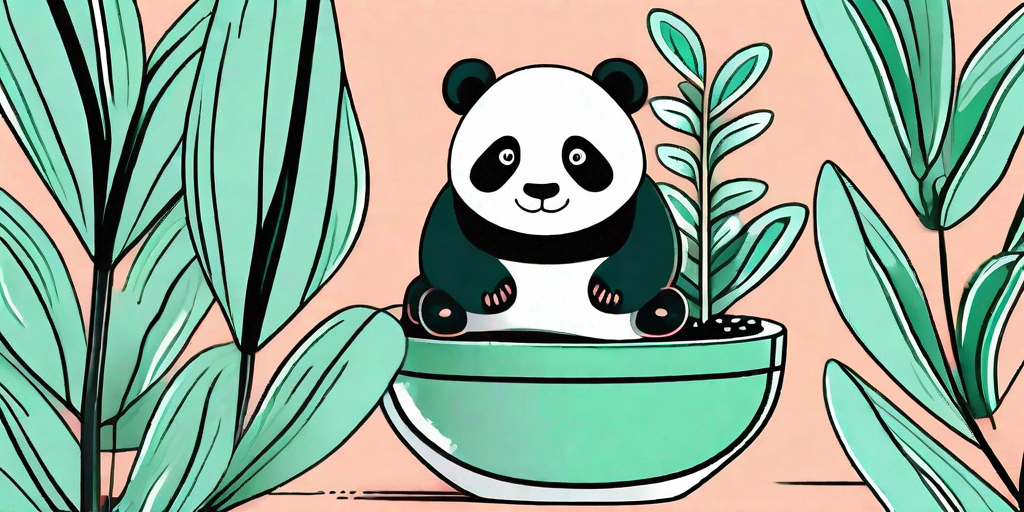
If you're a plant lover with a penchant for the peculiar, you've probably come across the Panda Plant. This adorable succulent, also known as Kalanchoe tomentosa, is a crowd-pleaser with its fuzzy, ear-like leaves that resemble, well, a panda's ears! But how do you grow and care for this charming little plant? Buckle up, green thumbs, because we're about to embark on a journey into the world of Panda Plants.
The Basics of Panda Plant Care
Before we dive into the nitty-gritty, let's cover some basic ground. Panda Plants are native to Madagascar, so they love a good dose of sunlight and aren't too fussy about water. They're also pretty hardy, which makes them perfect for those of us who might not have been born with the greenest of thumbs.
But don't let their easy-going nature fool you. These plants still need a bit of TLC to thrive. So, let's get down to the details.
Lighting and Temperature
Panda Plants love the sun, but they're not big fans of sunburn. To keep your plant happy, place it in a spot that gets plenty of bright, indirect light. A south or west-facing window is ideal. If you notice the leaves turning a bit brown, it might be getting too much direct sunlight.
As for temperature, Panda Plants prefer it on the warmer side. They can handle temperatures between 60 and 75 degrees Fahrenheit (15-24 degrees Celsius). So, unless you live in a freezer, your Panda Plant should be just fine.
Watering and Feeding
When it comes to watering, less is more. Panda Plants are succulents, which means they store water in their leaves. Overwatering can lead to root rot, which is a big no-no. Wait until the soil is completely dry before watering again. And when you do water, give it a good soak.
Feeding your Panda Plant isn't necessary, but it can help it grow. Use a balanced, water-soluble fertilizer once a month during the growing season (spring and summer). Just remember, when it comes to feeding, less is more.
How to Grow Your Panda Plant
Now that we've covered the basics, let's get to the fun part: growing your own Panda Plant. Don't worry, it's not as daunting as it sounds. In fact, it's quite simple.
First, you'll need a Panda Plant cutting. You can either buy one or take one from a mature plant. Just make sure the cutting has at least two leaves.
Planting Your Cutting
Once you have your cutting, let it dry out for a few days. This helps prevent root rot. Then, plant it in a pot with well-draining soil. Succulent or cactus mix works well. Make sure the pot has drainage holes to prevent water from sitting at the bottom.
Place the pot in a sunny spot and wait. After a few weeks, you should see new growth. Congratulations, you're now a proud Panda Plant parent!
Common Panda Plant Problems
Despite their easy-going nature, Panda Plants can still run into a few issues. But don't worry, most of these problems are easily solvable.
Yellowing Leaves
If you notice your Panda Plant's leaves turning yellow, it might be getting too much water. Remember, these plants are succulents, so they don't need a lot of water. Cut back on watering and make sure the soil is completely dry before watering again.
Brown Spots
Brown spots can be a sign of sunburn. If your Panda Plant is getting too much direct sunlight, move it to a spot with more indirect light. If the spots persist, it might be a sign of a fungal infection. In this case, remove the affected leaves and treat the plant with a fungicide.
Frequently Asked Questions
Can Panda Plants grow indoors?
Yes, Panda Plants can grow indoors. They're actually quite popular as houseplants due to their low-maintenance nature and cute appearance.
Are Panda Plants toxic to pets?
While Panda Plants aren't deadly to pets, they can cause irritation if ingested. So, it's best to keep them out of reach of curious cats and dogs.
How often should I repot my Panda Plant?
Panda Plants don't need to be repotted very often. Once every two to three years should be enough. However, if you notice the roots poking out of the drainage holes, it might be time for a bigger pot.
Conclusion
And there you have it, folks! Everything you need to know about growing and caring for your Panda Plant. With a bit of care and attention, your Panda Plant will reward you with its cute, fuzzy leaves and easy-going nature. So, what are you waiting for? It's time to unleash the cuteness!















